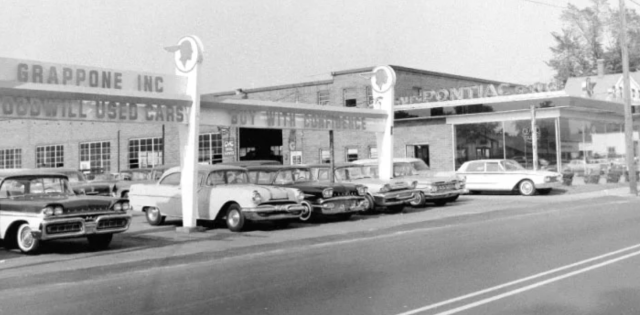Earlier this year, when Ford unveiled the F-150 Lightning, it did far more than just announce the newest iteration of the most popular and best-selling vehicle in America for the last 40 years. It ushered in a new—and long overdue—era of battery-electric vehicles built not to fill niches within the American car market, but for the bulk of it.
This was a watershed moment in automotive history, and maybe American history. That’s because the F-150 Lightning is far more than just a truck. And it’s more than just an electric truck. It’s the vanguard of a wave of vehicles that can finally bridge the gap between the battery-electric vehicles we have now, and the BEVs that can truly make an impact on our climate over the long term by appealing to the vast majority of American car and truck buyers in a way that our current EVs simply do not.
Franchised dealers have been waiting for this moment for years. Dealers are “all in” on EVs and incredibly excited about the new electrified products that are being announced almost daily. And dealers are hungry for the sales and service opportunities that are going to come with having numerous new EV models to sell.
And while today’s EVs are exceptional, particularly compared to those of just a decade ago, the reality is that almost all of them appeal primarily either to stalwart supporters of reducing greenhouse gas emissions or luxury vehicle buyers who want to be on the cutting edge of technology and performance.
One of the great mistakes we make in assessing our progress on converting America’s fleet to electric is assuming that today’s EV buyers will look like the EV buyers of tomorrow. This simply isn’t true.
It is undisputed that Tesla has been extremely successful at selling its products, and the company deserves significant credit for what it has been able to accomplish. But does Tesla’s success prove that you can sell EVs in great quantities in America? Does it reveal the path to the mass adoption of EVs?
Short answer: No!
What Tesla has proven is that you can sell Teslas very successfully in America to a certain, and pretty small, subset of our population. To date, American EV buyers are vastly different from ICE-vehicle buyers. In particular, compared to ICE buyers, EV buyers are much wealthier, much better informed about EVs, and are acquiring their third, fourth or fifth current car.
Not only are America’s current EV buyers willing to pay full list price, many of them wear it as a badge of honor that they’ve done so. They know exactly what they want, so they don’t need to talk to a salesperson, either about the car or about financing. And because they tend to have multiple vehicles in their personal or family fleet, they are much more likely to be willing to wait for delivery, live with range limitations, live with the time and planning it takes to recharge, and deal with service delays.
But this buyer type is not likely to dominate the EV market over the coming years. Why? Because the vehicles are changing. And as the EV market leaves luxury niche status and enters the mainstream, its customers will come to resemble the average car buyer more and more.
This is a good thing! We should all be ecstatic that going forward, when we talk about how to foster adoption of EVs in the U.S., we won’t be talking exclusively about how to market $120,000 sports cars and luxury SUVs, or vehicles that compromise on utility, but instead will be talking about how to best market $40,000 pickup trucks—that just so happen to be electric.
It’s the EV customers of the future who we need to cater to if we are to have meaningful and broad EV adoption.
And we can finally start to think realistically about doing so. We are essentially at the doorstep of selling EVs—real, functional, non-niche EVs—to mass-market car buyers for the first time ever. And to sell effectively to mass- market buyers, you need to capitalize on what has worked for mass-market buyers for generations.
Things like consumer education about the product, help with comparing models, working with a customer’s budget constraints, financing assistance, helping with trade-ins, allowing test drives, and—yes—even good-old-fashioned tire kicking. And this is all in addition to the new challenges specific to EVs, such as the complexities of charging—the fact, for instance, that electric rates vary based on the time of day and the level of charge—and other variables that don’t exist in the ICE market.
Dealers are absolutely essential in this world of new EVs. Because once you get past luxury vehicles and into the mass market, you will not achieve broad acceptance of any product, regardless of how it’s powered, by rejecting the attributes of the sales and service process that mass- market vehicle buyers aren’t just accustomed to, but that they depend on to confidently choose the right vehicle at the right price that best meets all their needs.
We hear a lot of people argue that dealers are an impediment to EV sales in the U.S. This has never been true. And moving forward, this type of thinking won’t just be wrong, it will be dangerous—if our goal is, as it should be, to sell a greater number of EVs to a broader segment of the American market.
This is a critical juncture in our march toward a cleaner future. And it’s a good time for policymakers and stakeholders at all levels to think critically about what it’s going to take to sell EVs in greater volumes to customers who haven’t experienced EVs yet.
Because the reality is that it’s going to take a lot. It’s going to take a network of tens of thousands of retail and service points located in just about every corner of the country, not just a website. It’s going to take hundreds of thousands of knowledgeable sales staff, not just a 1-800 number. And it’s going to take hundreds of thousands of highly-trained technicians capable of providing professional service on the spot, not just mobile repair trucks.
It’s going to take dealers. Fortunately, we’re already here, and we are raring to go.










